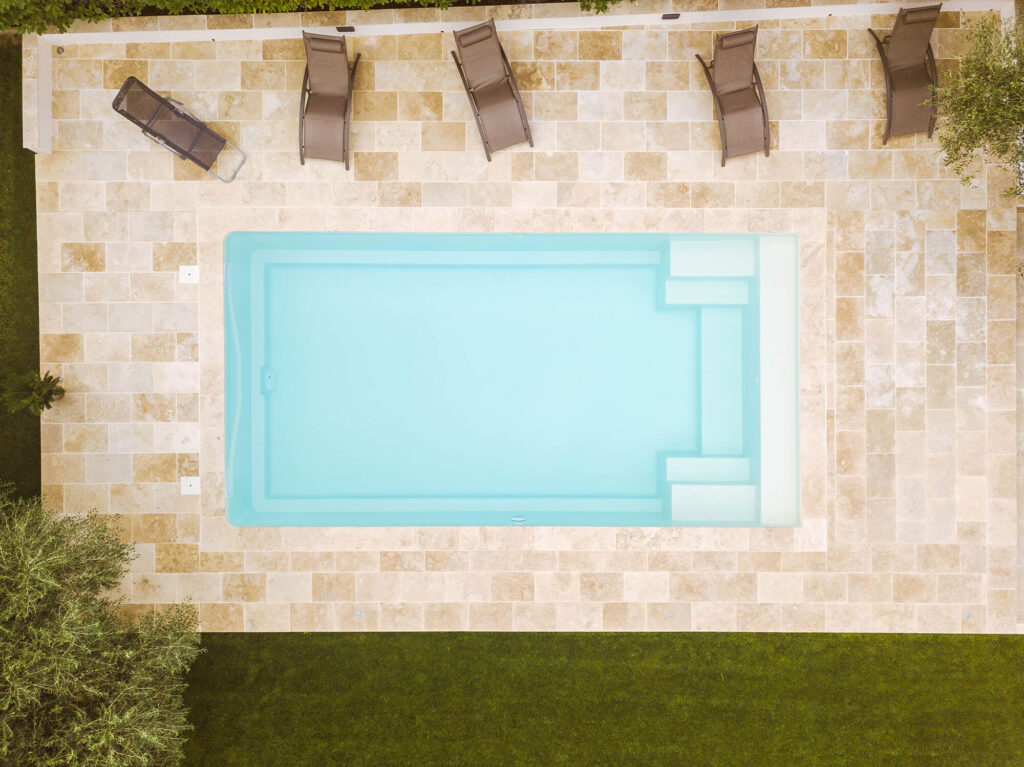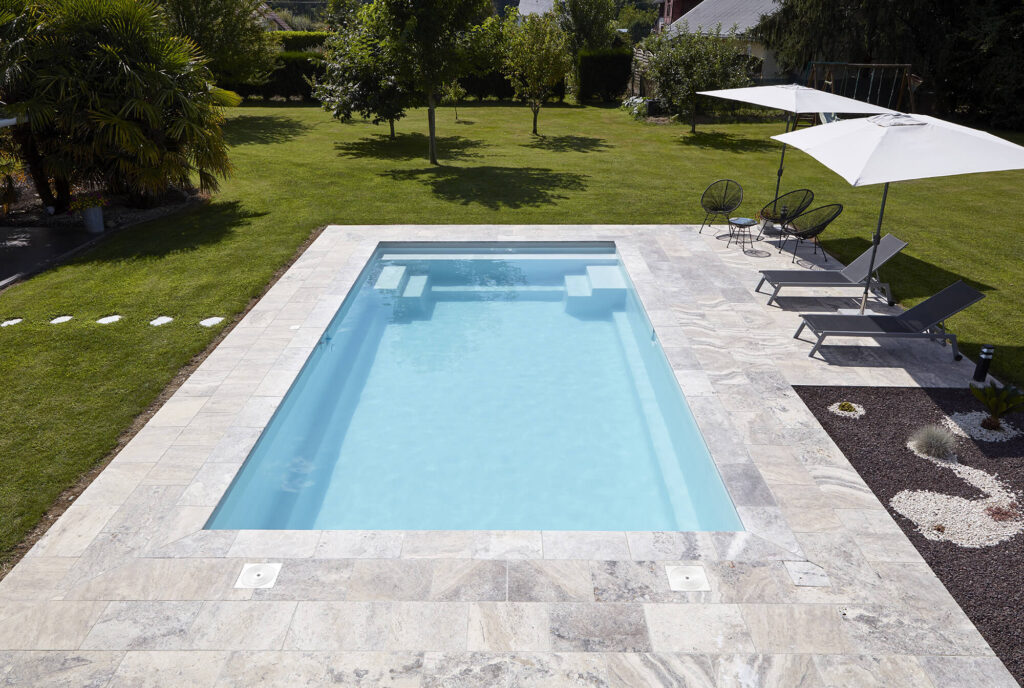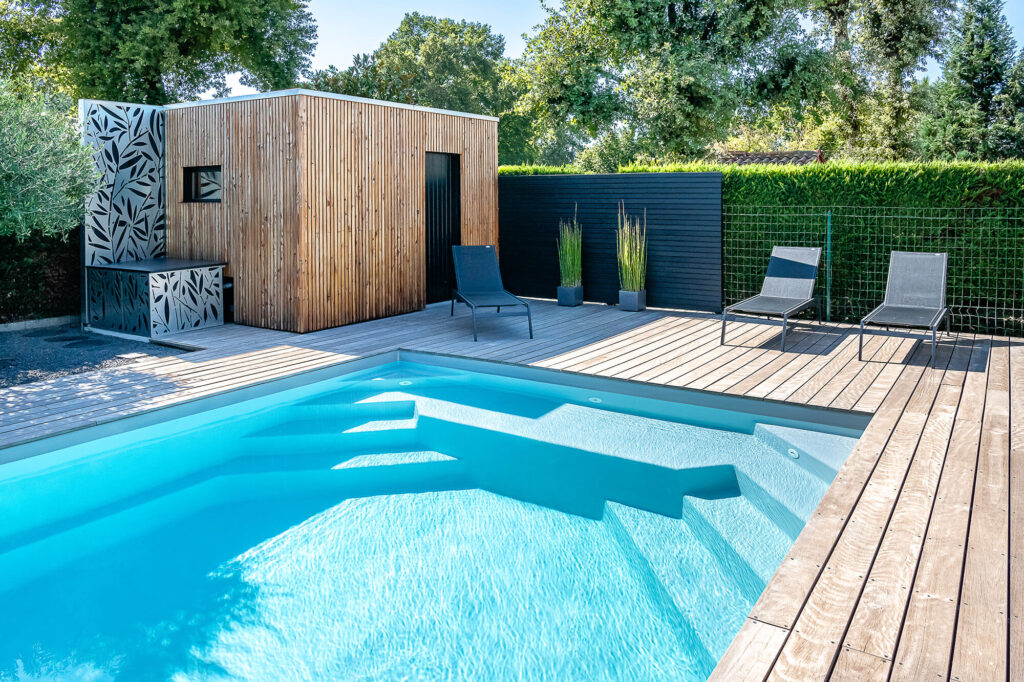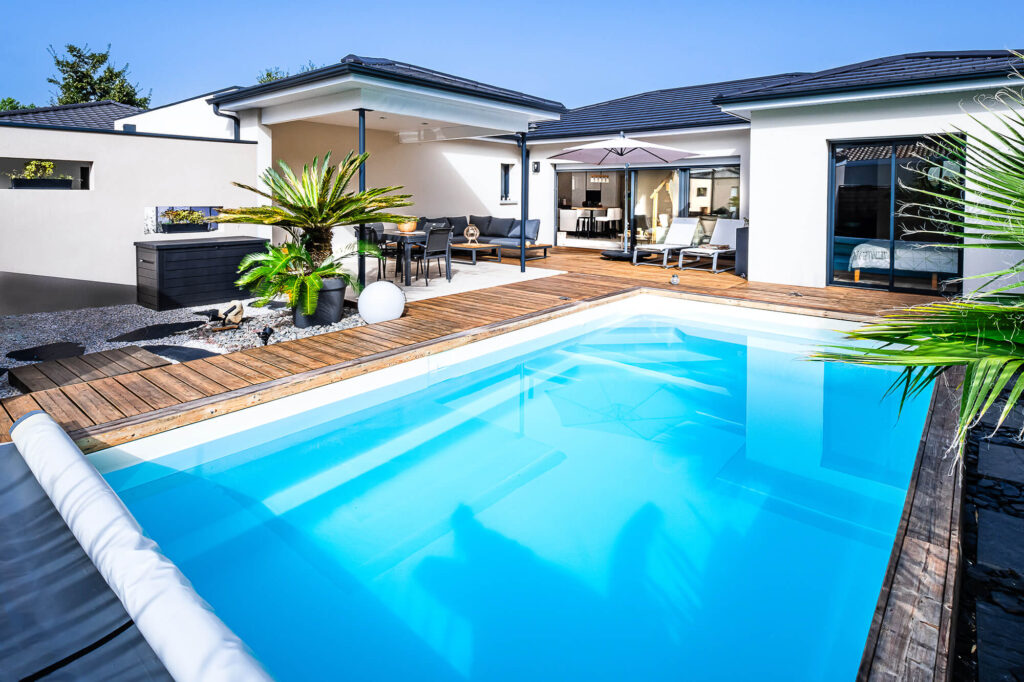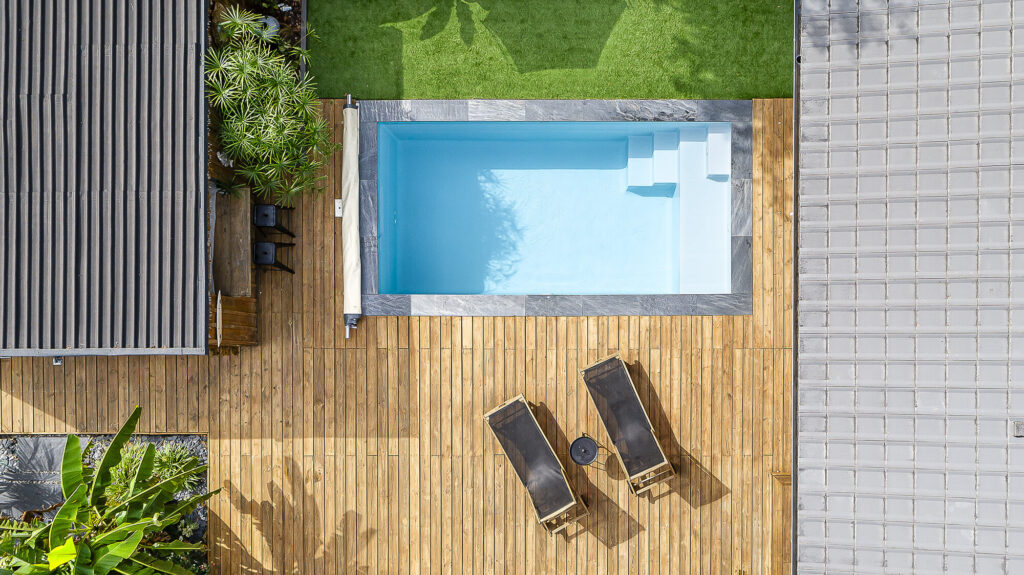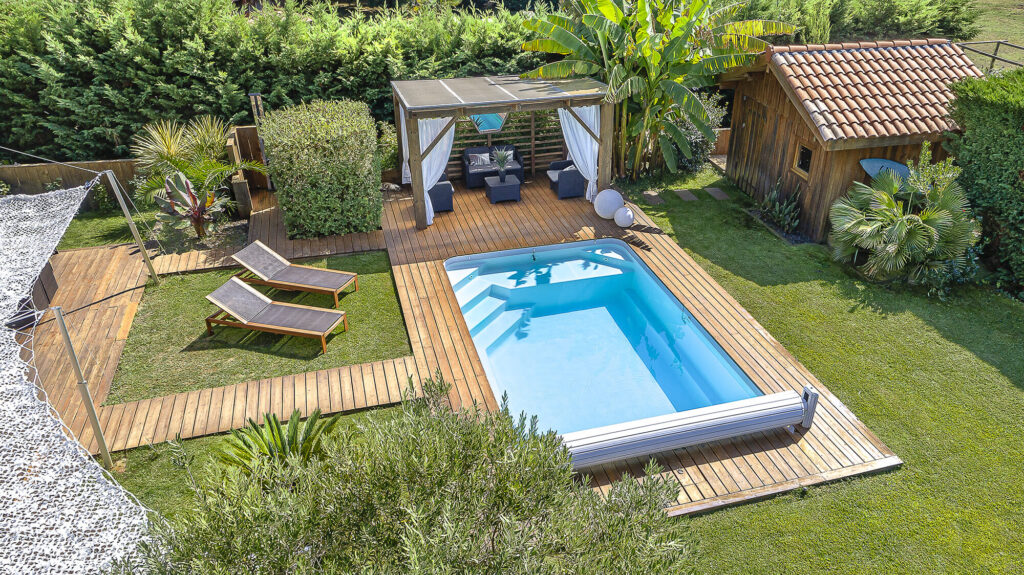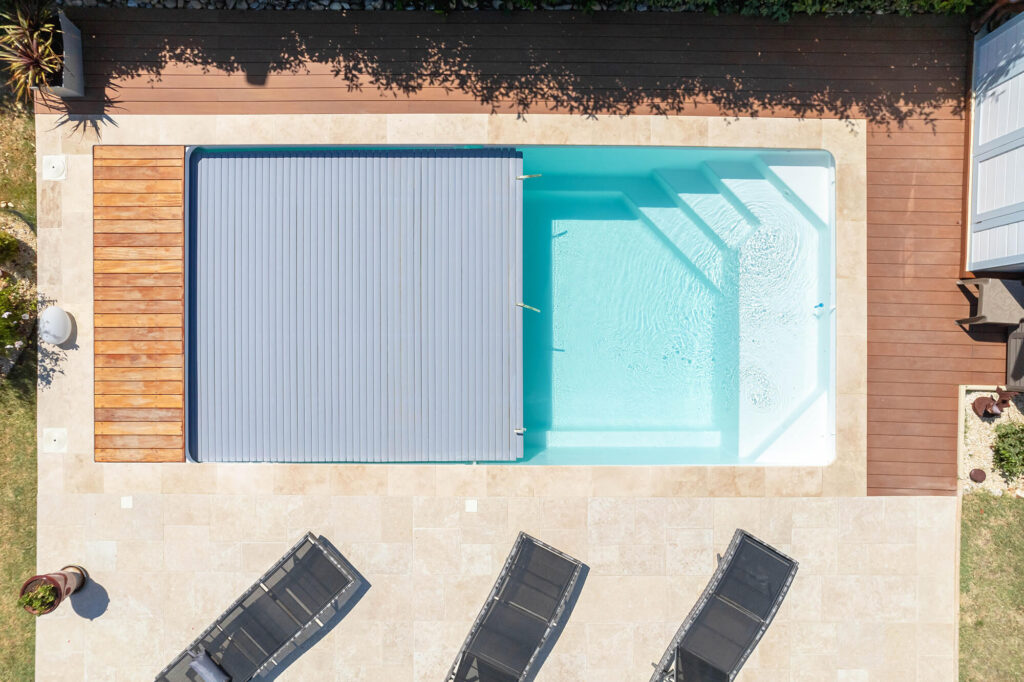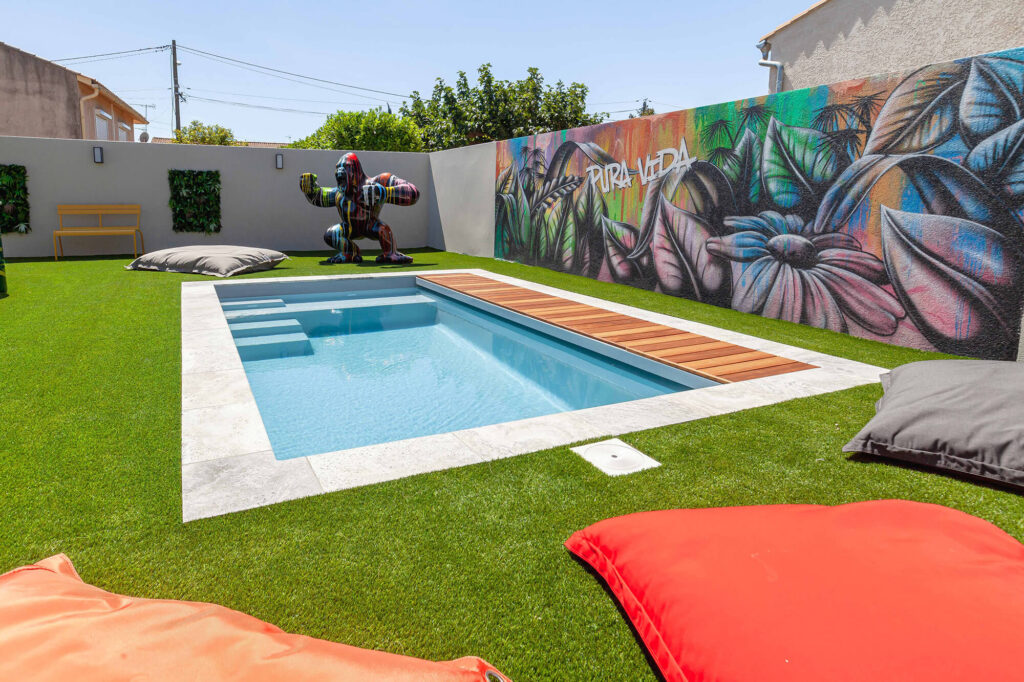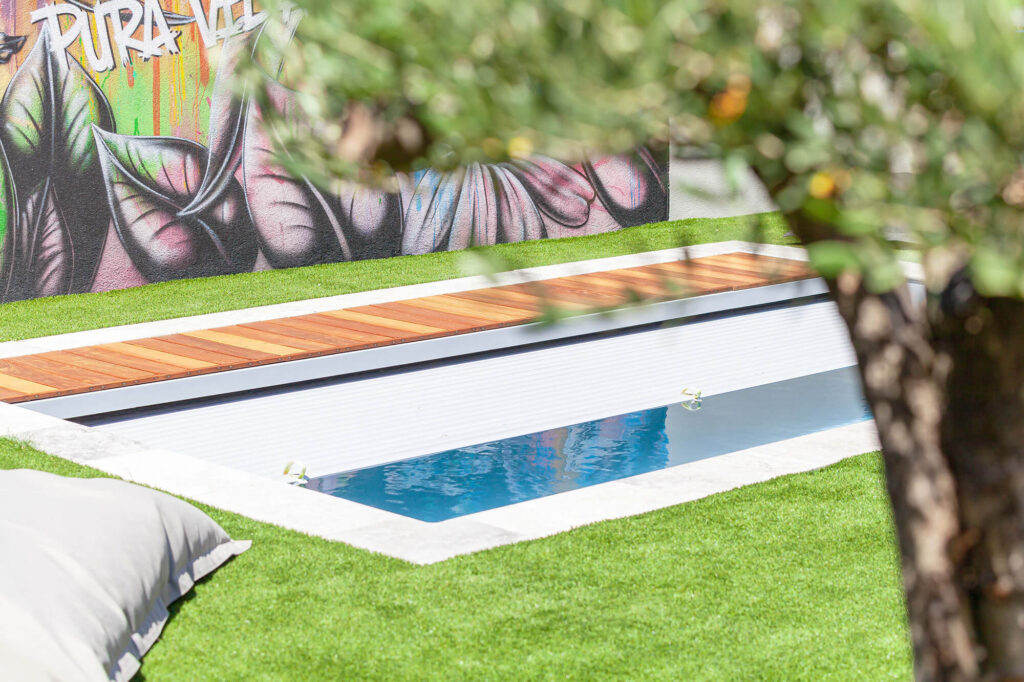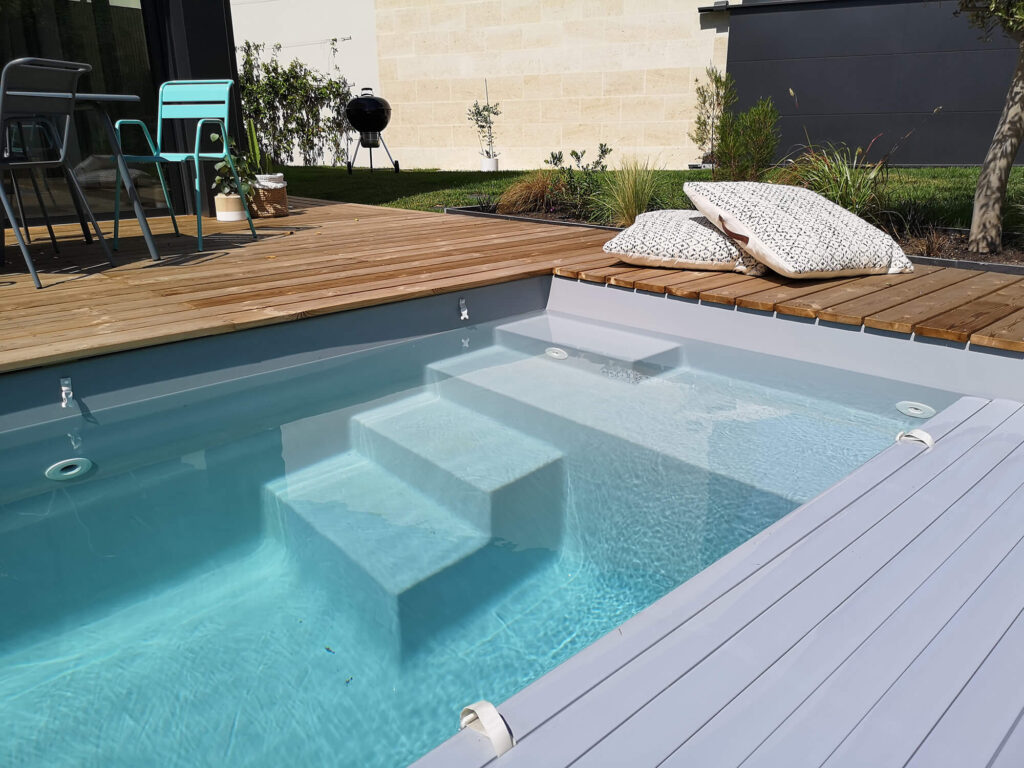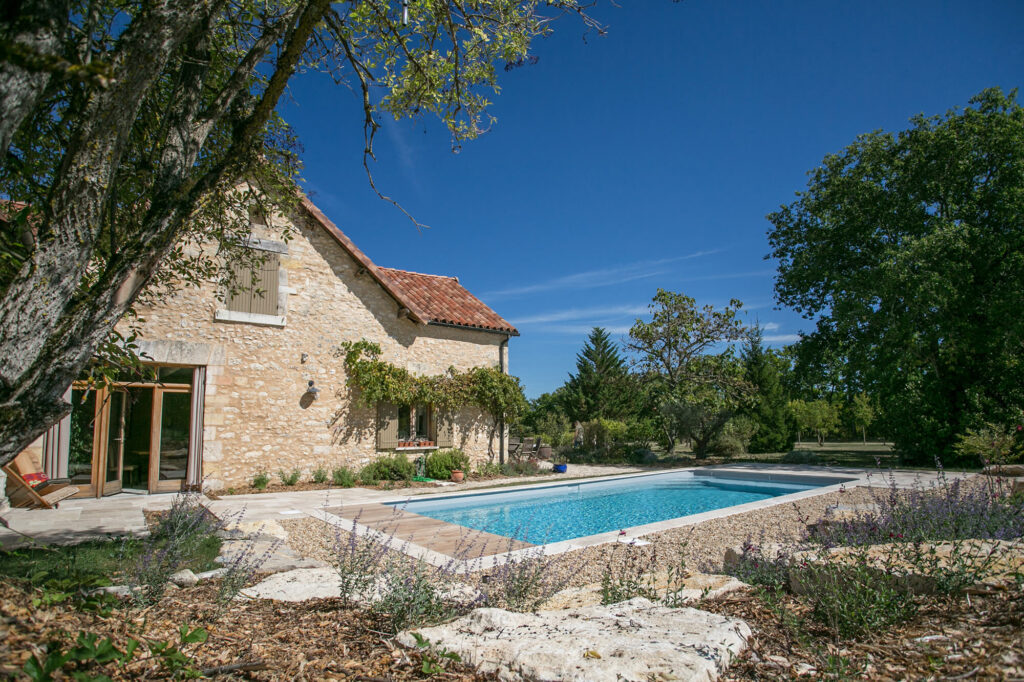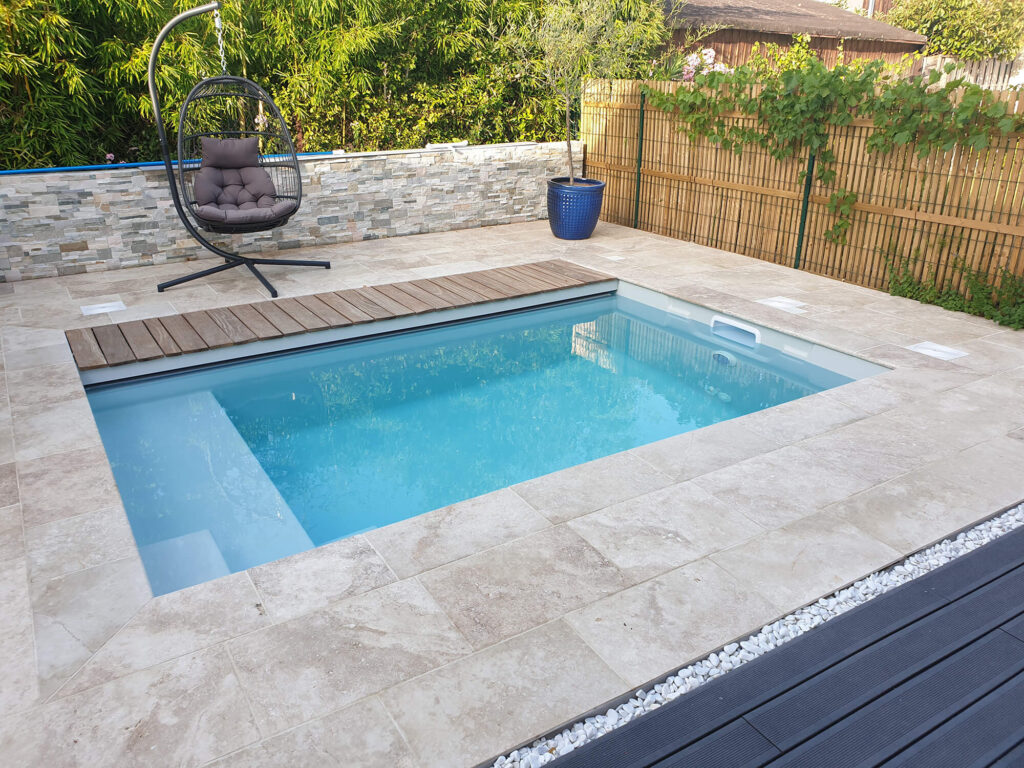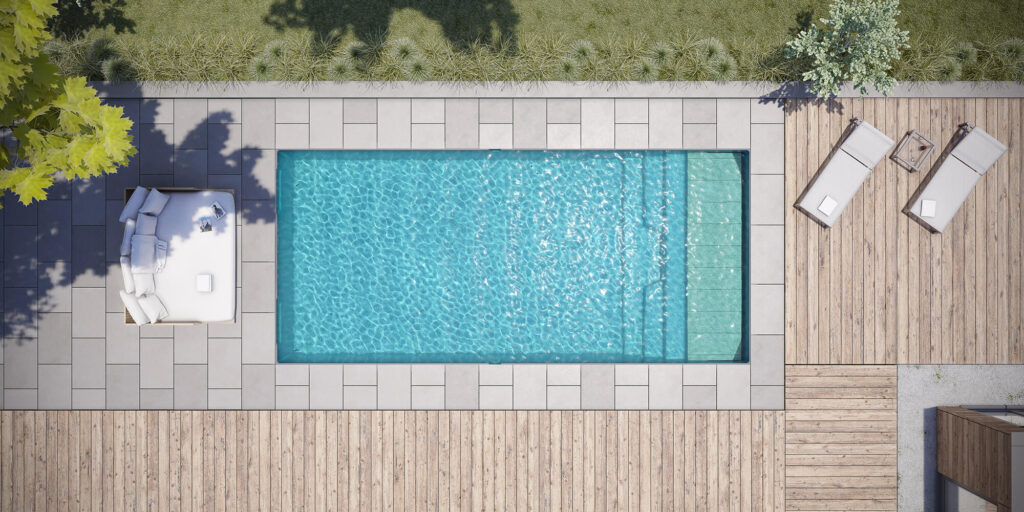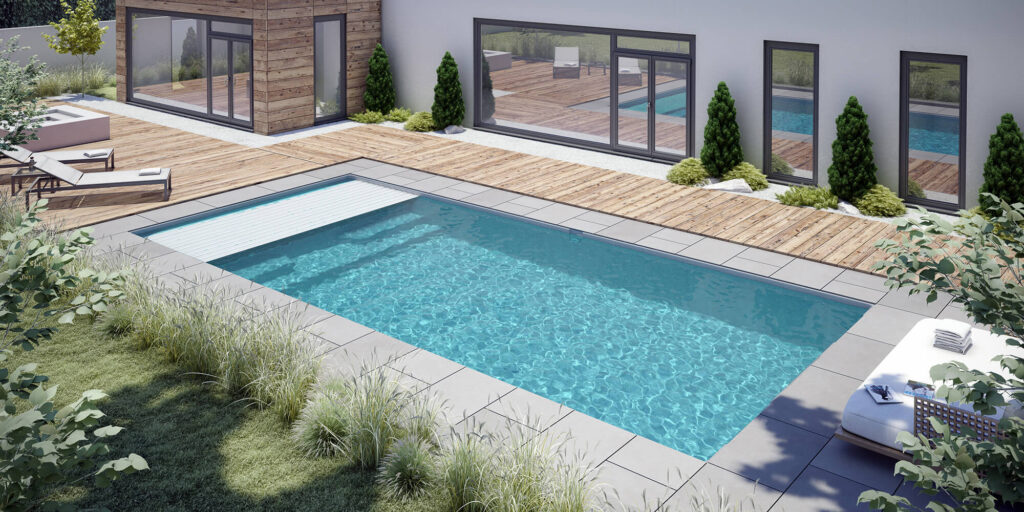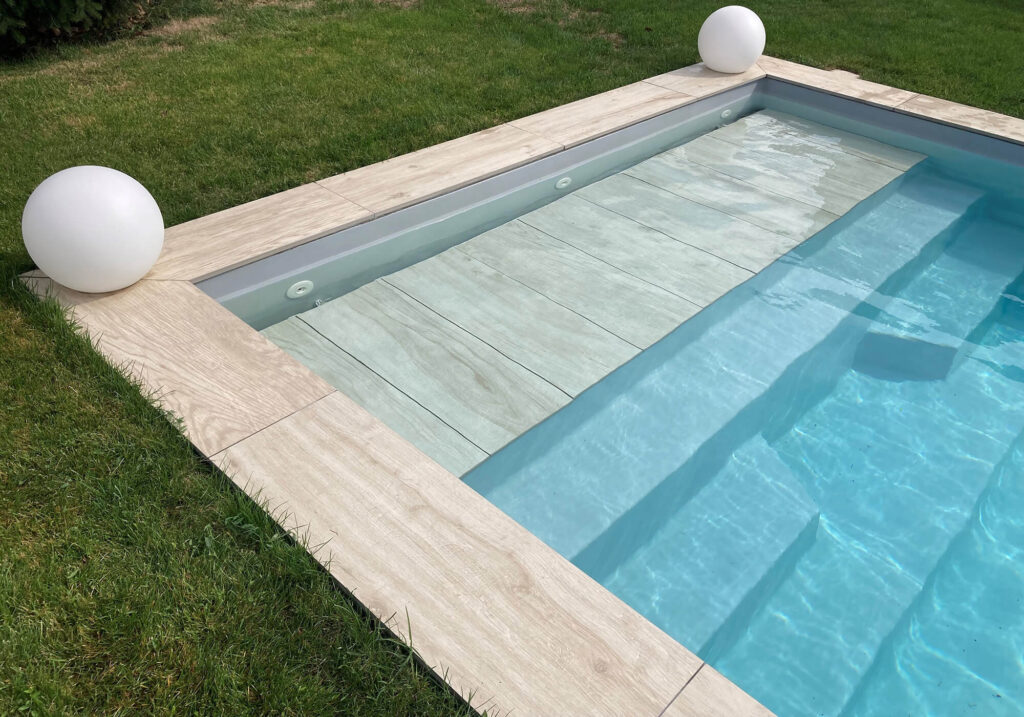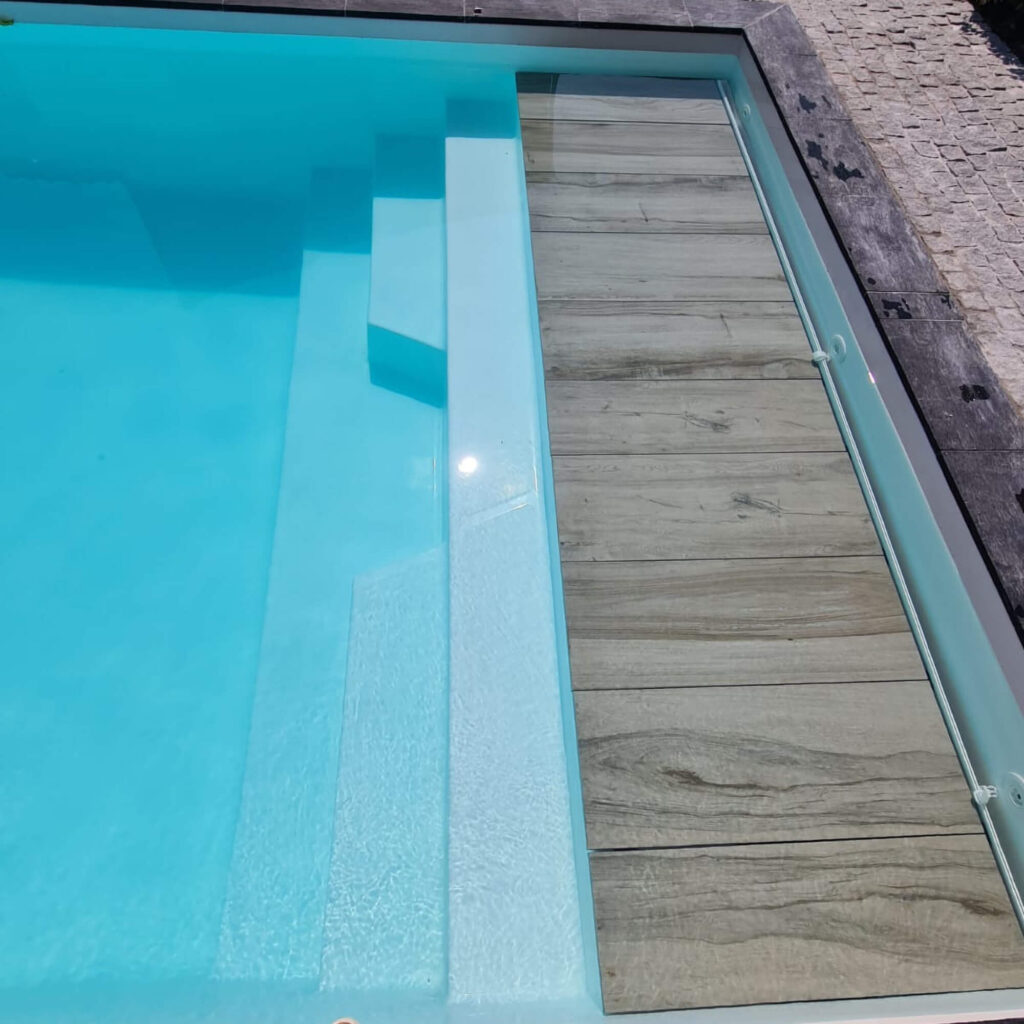In summer as in winter, maintaining the water in a swimming pool is essential to ensure its quality but also to enjoy pleasant swimming moments.
While several solutions exist, salt pools have the advantages of ease of maintenance, respect for the environment and a product that is less aggressive for your eyes and skin.
On the other hand, the way salt works and is used to disinfect and clean your pool is not similar to chlorine or bromine. So, how does maintenance work for your salt pool ?
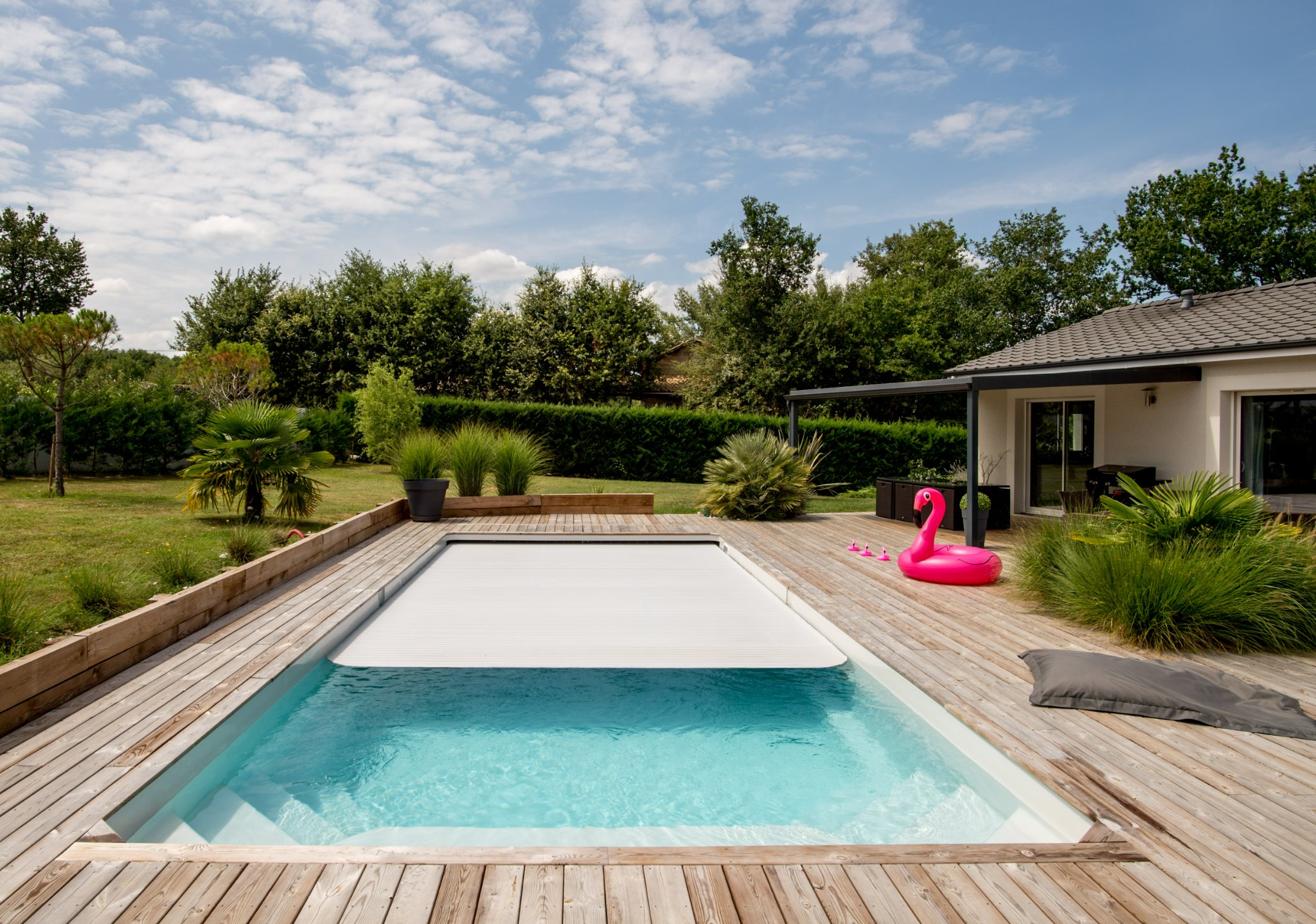
Daily maintenance of a salt pool
Although salt pool treatment makes it easier to maintain clean and healthy water, it is still important to understand how it works. Indeed, thanks to filtration and the installation of an electrolyser , the salt will pass through a filter to change into chlorine, before returning to the pool water. After this step and in contact with the sun's rays, the chlorine will return to the state of salt.
In parallel with this disinfection process, it is important to check the main data relating to the pool water (pH level, alkalinity level, temperature) in order to maintain its quality.
How much salt in a swimming pool?
It depends on two parameters:
– The volume of water present in the pool which will subsequently determine the salt level of the pool;
– The shape of the pool ;
Salt levels also depend on daily monitoring of salt concentration, using a salinometer or test strips.
To learn how to calculate the volume of water and salt concentration in your pool, use this table for calculating pool salt needed based on volume:
| Stage | Calculation |
| Calculating the volume of the swimming pool | Rectangular swimming pool: Length x Width x Average height |
| Round pool: Previous volume x 0.78 | |
| Oval pool: Previous volume x 0.89 | |
| Calculating the amount of salt | Salt dosage x Pool volume |
| Calculating salt deficiency | Water volume x Missing salt difference |
| Calculating excess salt | Water height (m) = (1 – (recommended salinity / pool salinity)) x (pool volume / pool surface area) |
Can you put shock chlorine in a salt pool?
As a reminder, water treatment works with salt electrolysis . In other words, thanks to an electrolyzer, the salt will be transformed into sodium hypochloride, a form of natural chlorine.
Therefore, using shock chlorine as a product for your salt pool has no negative impact and it helps restore the pH and alkalinity levels (in ppm).
On the other hand, be careful with the dosage of shock chlorine! Too high a dosage of this product can lead to an excess of pH or alkalinity, which is just as bad for the quality of your pool water. Indeed, the reason why it is preferable to switch from a chlorine pool to salt is mainly the harmful ecological and health effects of this type of product.
To check this and set the correct chlorine level, use a pH regulator. This will allow you to gradually monitor the different levels and benefit from effective shock chlorine treatment.
Winterizing a salt pool
Wintering: an essential operation to protect your salt pool
When the summer season ends and winter sets in, it is important to think about winterizing swimming pools in order to protect its structure, its equipment and above all to find it intact the following spring.
Warning! Winterizing does not mean emptying your pool. It may move and crack under the pressure of the surrounding ground.
But before starting the wintering process, it is recommended to check that the water temperature is continuously below 15°C . If this temperature is too high, you can neither stop the electrolysis device nor the filtration. The wintering of your salt pool cannot therefore be carried out yet.
The steps for winterizing a salt pool
There are 6 of these steps to effectively protect swimming pool water during the winter:
- Accessories and equipment : ladder, rail, diving board, slide or heat pump must be removed from your pool. The heat pump must be covered with an appropriate cover. Also remember to turn off all equipment circuits.
- Pool Water : Make sure you have enough grams of salt in your pool using test strips. Also check the pH level which should be between 7.0 and 7.4 and the alkalinity level which should be between 80 ppm and 120 ppm.
- Clean your pool water with salt : remove debris and waste from the surface of the water using a net, then run your robot vacuum cleaner for the bottom of the pool. Also drain and wash the skimmer and filter baskets.
- Specific wintering products : to prevent the growth of algae and micro-organisms, add this type of product to your pool water and run the filtration for at least 8 hours.
- Electrolyser : stop the electrolysis device so as not to damage the plates then disassemble the salt cell. Then clean this cell with a plastic or wooden tool. Once this step is done, store the electrolyser cell in a dry place, away from sunlight.
- Cover the pool : equip yourself with a tarpaulin, a blanket or a submerged roller shutter under the beach to cover your pool. This installation will prevent photosynthesis and the development of algae during the wintering process.
Salt treatment is therefore a very important step in disinfecting and cleaning your pool. Then, by following the steps of the wintering process, your salt pool will be protected during the winter and you will be able to find it intact the following spring.
But also don't forget to check the pH regulator and alkalinity level regularly !
Configure your pool online Back to all news